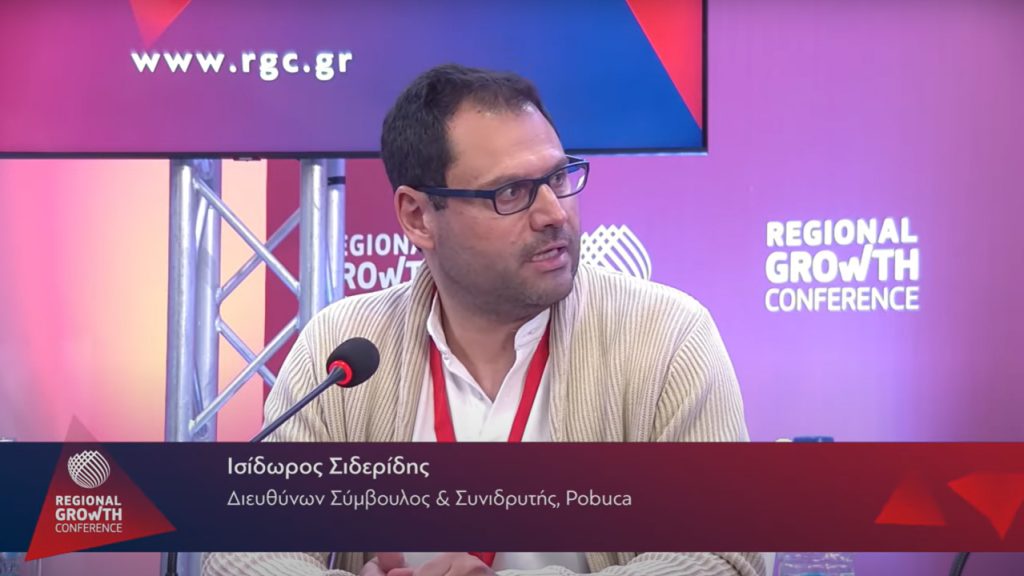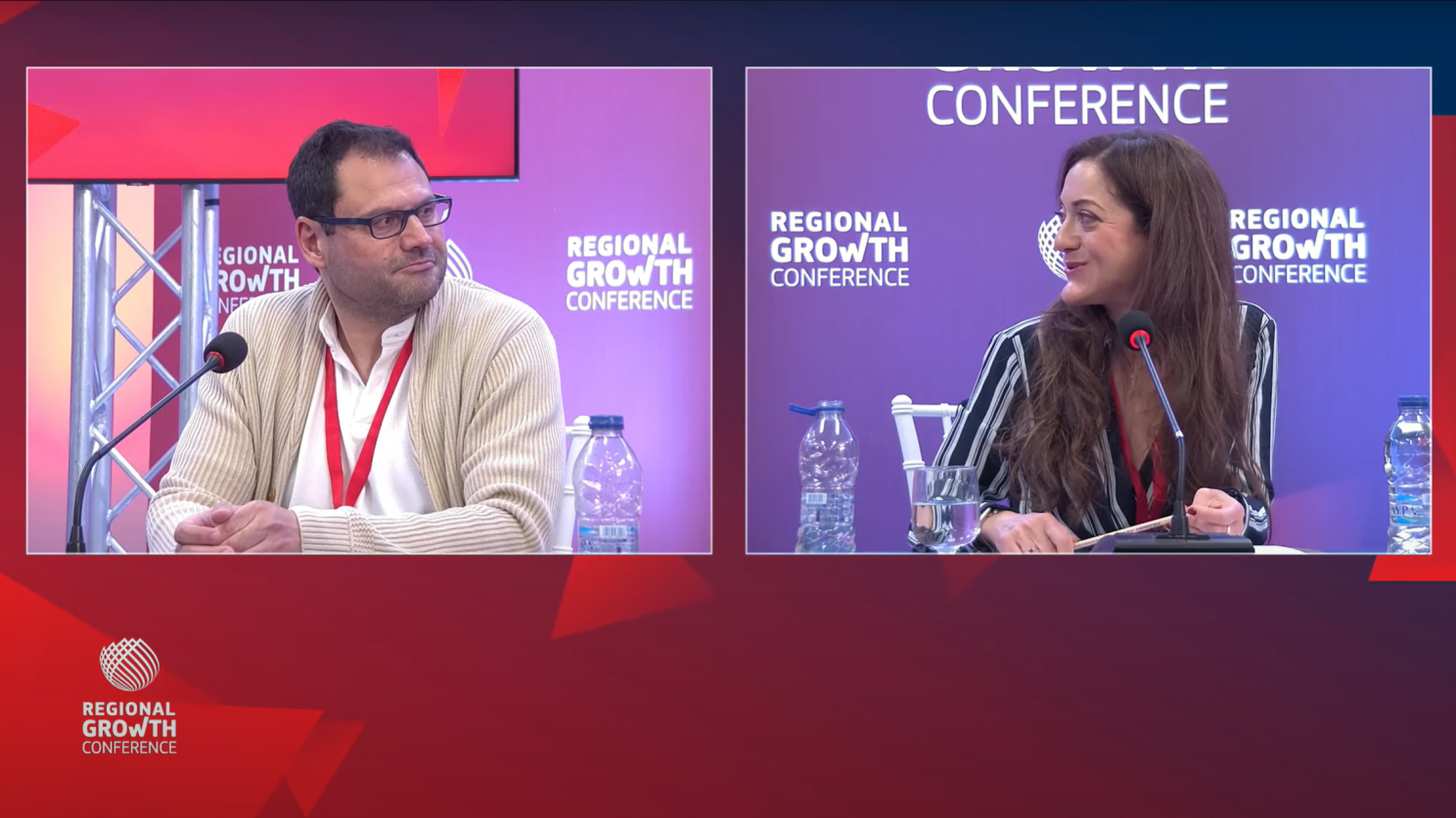Europe’s quiet advantage in the age of AI

- marketing
- Categories: Isidoros' blogposts
- Tags: AI, CX, Loyalty
Prefer watching a video instead of reading the article? Catch the full panel discussion here!
From Patras to a bigger puzzle
Last week I sat on a panel at the Regional Growth Conference in Patras to debate the geopolitics of Artificial Intelligence. As soon as the session ended, one thought drowned out all the others:
If AI is about to generate most of the planet’s wealth, the winning strategy may be to own the best way to live—not the longest timesheet.
Why “130h work-weeks” won’t scale

Who is Marissa Mayer? A Stanford‑trained computer scientist, she joined Google in 1999 as employee #20 and its first female engineer, later rising to vice‑president of Search and then to CEO of Yahoo (2012‑17).
Her 130‑hour mantra. In a 2016 Bloomberg interview she recalled the early Google grind:
Could you work 130 hours in a week? The answer is yes, if you’re strategic about when you sleep, when you shower, and how often you go to the bathroom. The nap rooms at Google were there because it was safer to stay in the office than walk to your car at 3 a.m.
Such stamina became Silicon Valley folklore, perpetuating the belief that brute-force hours are the core driver of productivity and innovation. Until recently, this mindset partly explained why startups thrive in the U.S. and why its economy significantly outpaces Europe’s.
Europe is testing the opposite hypothesis. Germany’s governing SPD has officially floated a 25‑hour work‑week (with no pay cut)to curb “self‑exploitation”. As AI progressively takes on mental tasks one by one, the marginal value of each extra human hour shrinks.
Once AI is creating most of the wealth, the real race shifts from “hours logged” to quality of life per hour lived—a metric where Europe already leads.
Consultants put hard numbers on the upside: AI could lift global GDP by 14 %—≈ US $15.7 trillion—by 2030. Whether that value is captured in San Francisco or Stuttgart matters, but only up to a point: once the algorithms spill into open‑source and commoditised cloud APIs, know‑how will diffuse. The U.S. might stay a year ahead, maybe more, yet Europe will still build advanced models—and can channel the gains to citizens.

The culture dividend
Europe already guarantees ≥ 20 days of paid vacation by law, with many countries offering 25+. The U.S. offers no statutory minimum at all. Average life expectancy in OECD Europe hovers above 80 years, versus 77.5 in the United States. Factor in universal healthcare, dense public transport, and streets built for walking—not driving—and the equation shifts: quality of life outperforms quantity of output.
An American friend once described it this way, and I can’t improve on it:
You wake to church‑bells in a car‑free lane, grab still‑warm bread, and cycle past a sun‑lit plaza where neighbours linger over espresso. Six weeks of holiday aren’t a perk; they’re life‑support. Evenings fill with friends, football, or comfortable silence while the sky goes pink. Success is counted in shared meals and long Sundays, not unread e‑mails at 3 a.m.
That is not laziness—it is the European civilizational design.
Turning “slow” into strength
Europe’s history has made it cautious. After centuries of wars, partitions and genocides, Europeans decided that the big, shared decisions must be taken by consensus—because we have lived through what happens when consensus is absent: wars, massacres and misery. That scar tissue slows us down, yet it also makes us far more alert to unintended consequences.

At first glance it feels like a punch‑line: while the U.S. and China race ahead with innovation, Europe fiddles with bottle tops. The same “slow‑but‑sticky” dynamic is playing out in AI. In February 2025 the first prohibitions of the EU AI Act took effect, banning systems judged “unacceptable risk.”Any company—American, Chinese, or European—that wants to sell in the world’s second‑largest economy must comply or exit.
Being second or third to deploy headline‑grabbing tech can look like weakness, but it buys three quiet advantages:
- Free R&D lessons – Let early movers burn capital and expose the bugs; Europe implements the working version.
- Global rule‑setting – Late entry coupled with strong regulation shapes markets just as the tethered cap did.
- Life‑quality arbitrage – A steadier rollout keeps inequality, burnout and backlash in check—an asset when AI is on course to generate most of the wealth anyway.
In other words, going slower may actually be the fast lane when your end‑game is not merely GDP, but a society in which the extra GDP actually translates into happier, healthier human lives.
A different victory condition
So how does Europe “compete” with a culture that worships the 130‑hour sprint? It doesn’t—and doesn’t need to.
- Wealth creation: AI shrinks the marginal value of brute‑force hours.
- Well‑being: Europe’s social model already ranks high on the metrics the rest of the world is beginning to prize.
- Talent gravity: As remote‑first AI labs proliferate, people will migrate to places that maximize health, leisure, and community.
Europe’s quality‑of‑life operating system may prove the ultimate competitive advantage when machines do the heavy lifting!
The real race
If the 20th century rewarded output per worker, the AI century will reward meaning per hour of human life. Europe is not falling behind; it is running a different race—the one that most societies will eventually want to join.